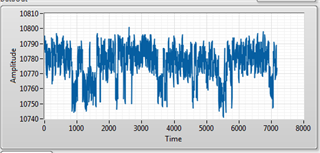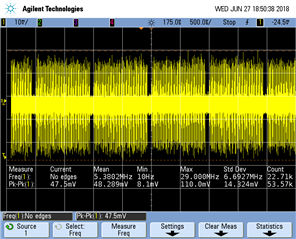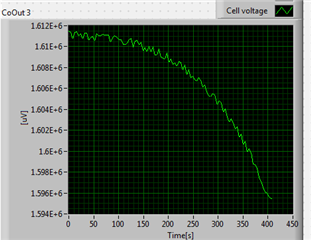Hello,
I found the strange phenomena on nRF52832.
By using the SAADC, I have some noise on ADC Data only at a certain temperature range.
Temperature range is depend on individual IC.
I might be the circuit oscillation at analog front end of SAADC, I think.
(internal reference voltage or op amp etc,)
I tried to switch DCDC on/off, but there's no difference on phenomena.
Anyone can resolve it?
I attach the files of real data and measurement condition.
Best regards,
Kiyoshi Iwai





